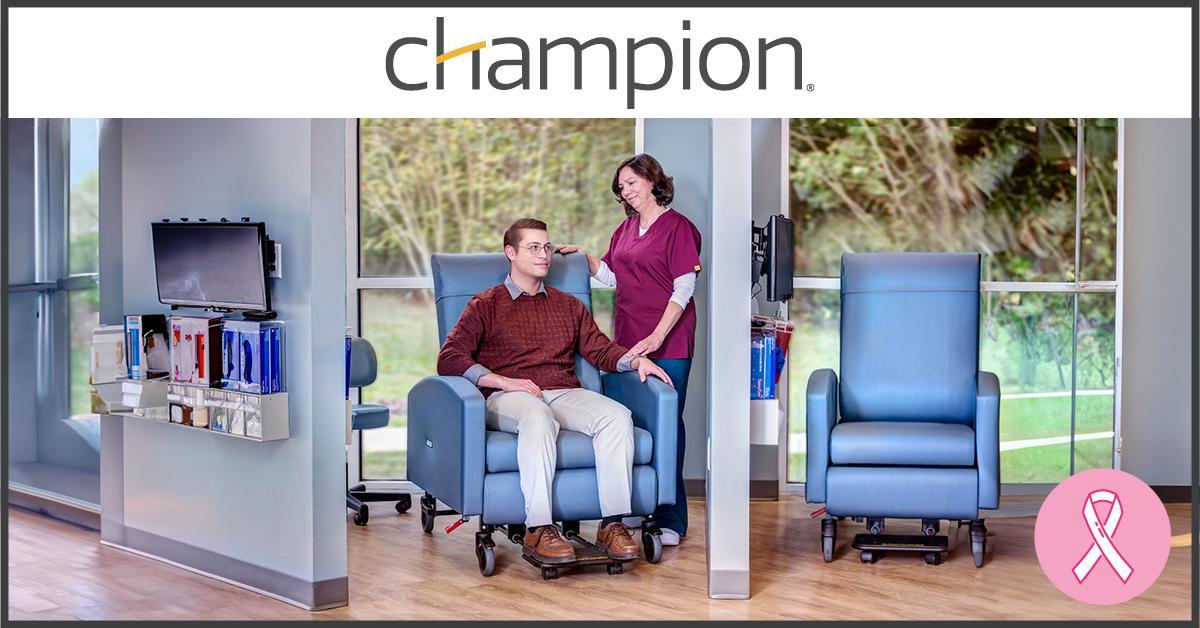
Each year, the month of October is designated Breast Cancer Awareness Month. Known best for its pink theme, the month features many national and local campaigns with the following goals:
● supporting people diagnosed with breast cancer
● educating people about risk factors
● stressing the importance of regular screening
● fundraising for breast cancer research
It’s rare that patients die from breast cancer itself. More commonly, patients diagnosed with breast cancer will die from what’s called Metastatic Breast Cancer (mBC)—which is when the cancer originally found in the breast tissue spreads to other parts of the body like the heart, lungs, or brain.
Contrary to common assumption, women aren’t the only ones who are diagnosed with breast—or chest—cancer. Here are other sobering statistics from various studies:

For more information about this disease, Breast Cancer Awareness Month and how you can get involved, visit the Komen website.
Why Oncology Patients Face Challenges Other Patients Don’t
Oncology patients face a different set of challenges than other patients. One, they are often given a terminal diagnosis, and suffer from a condition without a cure. This status can be extremely challenging for patients and their caregivers to absorb and manage mentally.
Additionally, there is still so much research to be done in the area of oncology, especially because there are so many different types of cancers and each diagnosis is different, to the extent that each patient (and treatment plan) is unique.
Sign up to get the latest industry news and offers right in your inbox
Furthermore, the treatments available are usually uncomfortable, with painful side effects, and very expensive. Treatments also take a lot of time, with routine visits to medical facilities and long hours sitting in one spot.
There aren’t enough oncologists in the United States to always give specialized care to the number of people with cancer. This is an unfortunate fact, since patient experience is affected by their interactions with physicians and caregivers—interactions that can also impact treatment outcomes. Research also shows that patient experience is partly determined by the comfort of their medical seating.
How Many Oncology Patients Does a Facility See Each Day?
A medical oncologist is a highly trained physician who is an expert in treating cancer with medications like chemotherapy and more targeted approaches. They help determine the medication plan and work with surgeons and radiation oncologists to manage patient care.
Statistics from the American Cancer Society show that in 2022, there were an estimated 1.9 million new cancer cases diagnosed and 609,360 cancer deaths in the United States.
The American Society of Clinical Oncology’s 2022 data shows that 13,365 physicians reported medical oncology or hematology/oncology as their primary practice in the United States—amounting to about six medical/hematology oncologists per 100,000 U.S. adults.
With numbers like these, oncologists in America can see up to 30 patients in a day, each with a different kind of cancer.
According to the Centers for Disease Control and Prevention (CDC), “More than 1 million cancer patients in the United States receive chemotherapy or radiation” annually, and a large number of those patients receive treatment in outpatient oncology clinics.
By 2040, the number of cancer survivors is projected to grow to 26 million. And those survivors will also be older, which means other issues might present as health challenges, or comorbidities. Although currently 67% of survivors are aged 65 or older, that percentage is expected to increase to 74%.
Patient Experience Is Affected by Interaction With Caregivers
“Caregivers” can be a catch-all term that refers to anyone caring for a patient. This may include the oncologist, the primary care physician, treatment techs like radiologists or chemo specialists, nurses, office staff, and loved ones.
More technically, the word refers to non-medical personnel like family and friends who assist the patient throughout their treatment, literally giving care. These folks play an important role in the patient’s life—from coordinating medical care and administering medications to keeping family informed and managing side effects.
The National Cancer Institute recognizes caregiver needs and offers helpful resources. For example, caregivers might experience any or all of the following:
● Have questions about treatment and side effects, how to find helpful resources, and ways to practice self-care.
● Experience their own emotional, social, and financial needs that result from giving care.
● Suffer increased distress when the person they’ve been caring for nears the end of life.
Here are some additional resources designed for caregivers that might provide support and also help explain how the patient experience is affected by interaction with caregivers, including their primary care doctor.
Patient Experience Is Also Affected by the Comfort of Their Medical Seating
Patient experience is also affected by the comfort of their medical seating. Seating should be comfortable and convenient, while also mitigating the risk of injury for patients and caregivers. Locking casters, non-slip surfaces, and ergonomic proportions all help keep people safe while receiving or providing treatment.
Chairs must also keep patients safe while allowing nurses and techs to access them. These challenges are even more pronounced in oncology clinics, where patients often must remain seated for hours at a time.
We recommend medical seating that provides comfort, convenience, support, safety, and access with features such as these:
● Premium Cushioning
● Lumbar Support
● Reclining Options
● Adjustable Heights
● Footrests
● Swing-Away Arms
Person-centric designs like these promote greater clinical efficiency and better patient outcomes.
Champion’s Antimicrobial Secura Performance Fabric
With Champion’s new Secura Performance Fabric, healthcare professionals can decrease the risks for immunocompromised patients while also increasing patient comfort.
Offering a proprietary PVC-free product with a luxury woven look, Champion’s Secura Fabrics are soft to the touch yet extremely durable. This antimicrobial performance fabric supports the harsh demands of the healthcare industry, while offering the welcoming appearance of a comfortable textile.
Help protect your oncology patients and improve their treatment experience with Secura Antimicrobial Performance Fabric, now available — and only available — from Champion.
